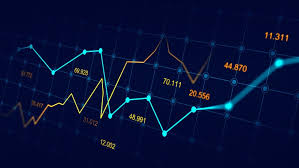
In recent years, automated trading forex Online Trading CM has transformed the way traders engage with the Forex market. With the rise of technology and data analytics, automated trading has evolved into a widely accepted trading method that offers numerous advantages over manual trading. As we delve into the realm of automated trading in Forex, it’s essential to understand its mechanisms, benefits, and implementation strategies.
Understanding Automated Trading
Automated trading, also known as algorithmic trading, involves using software programs to execute trades based on predefined criteria. These criteria can include various factors such as price, volume, time, and more. The primary goal of automated trading is to eliminate human emotions that often cloud judgment and lead to impulsive trading decisions. This method allows for faster trade execution, which is crucial in the highly volatile Forex market.
Advantages of Automated Trading
There are several compelling advantages to implementing automated trading in Forex:
- Speed: Automated trading systems can process vast amounts of information and execute trades within milliseconds, significantly reducing latency.
- Emotion-free Trading: Removing emotions from trading decisions helps prevent errors stemming from fear or greed.
- Backtesting Capabilities: Traders can test their strategies on historical data before deploying them in real time, allowing for more informed decision-making.
- 24/5 Trading: Forex markets operate 24 hours a day for 5 days a week, and automated trading systems can execute trades around the clock without the need for trader intervention.
- Diversification: Automated systems can monitor multiple currency pairs simultaneously, enabling traders to diversify their portfolios with ease.
How Automated Trading Works
At its core, automated trading systems operate on algorithms that signal when to buy or sell currency pairs based on specific market conditions. These algorithms can be programmed using various programming languages, with Python and MQL4/MQL5 for MetaTrader being among the most popular.
To get started with automated trading, a trader typically follows these steps:
- Define Trading Strategy: Determine the specific rules and parameters of the trading strategy, including entry and exit points, risk management, and money management techniques.
- Select Trading Software: Choose a trading platform that supports automated trading, such as MetaTrader 4 or MetaTrader 5, which allow users to create custom trading bots.
- Backtest the Strategy: Utilize historical data to test the effectiveness of the strategy against various market conditions, identifying potential flaws and areas for improvement.
- Implement the Strategy: Once satisfied with the backtesting results, deploy the trading algorithm in a live trading environment.
- Monitor Performance: Regularly assess the performance of the automated trading system and make necessary adjustments based on market changes or performance outcomes.

Choosing the Right Automated Trading Platform
The selection of an appropriate automated trading platform can have a profound impact on trading success. Factors to consider include:
- User Interface: An intuitive user interface is crucial for ease of navigation and managing trades effectively.
- Execution Speed: Look for a platform known for its reliable and fast order execution to minimize slippage.
- Execution Types: Ensure the platform supports various order execution types, including market orders, pending orders, and others.
- Availability of Custom Indicators: The ability to create and implement custom indicators or download existing ones enhances the trading experience.
- Customer Support: Reliable customer support can assist you in resolving issues quickly and efficiently, ensuring uninterrupted trading.
Automated Trading Strategies
There are numerous strategies traders can employ within automated trading, including:
- Trend Following: This strategy aims to capture profits by riding the momentum of established market trends.
- Mean Reversion: Based on the principle that prices will revert to their mean, this strategy identifies currency pairs that have deviated significantly from their historical averages.
- Arbitrage: Automated trading systems can help detect and exploit price discrepancies in different markets or trading platforms.
- News Trading: Algorithms can be designed to respond to breaking news and economic announcements, executing trades based on anticipated market reactions.
Risks Associated with Automated Trading
While automated trading offers significant advantages, it is not without its risks. Traders must remain vigilant and consider the following:
- Technical Failures: System outages or software errors can lead to unexpected losses. It’s vital to have contingency plans in place.
- Over-Optimization: Some traders fall into the trap of over-optimizing their algorithms based on past performance, which may not yield favorable results in real market conditions.
- Lack of Adaptability: Automated systems may not account for sudden market changes or unprecedented events, leading to poor decision-making.
Conclusion
Automated trading has revolutionized the Forex market, providing traders with tools to enhance their trading efficiency and profitability. Platforms like Online Trading CM empower traders by offering state-of-the-art technology and resources for seamless automated trading experiences. However, traders must approach automated trading with diligence, understanding both its advantages and inherent risks. By harnessing the power of technology and maintaining a proactive approach, traders can navigate the complexities of Forex with confidence and precision.
